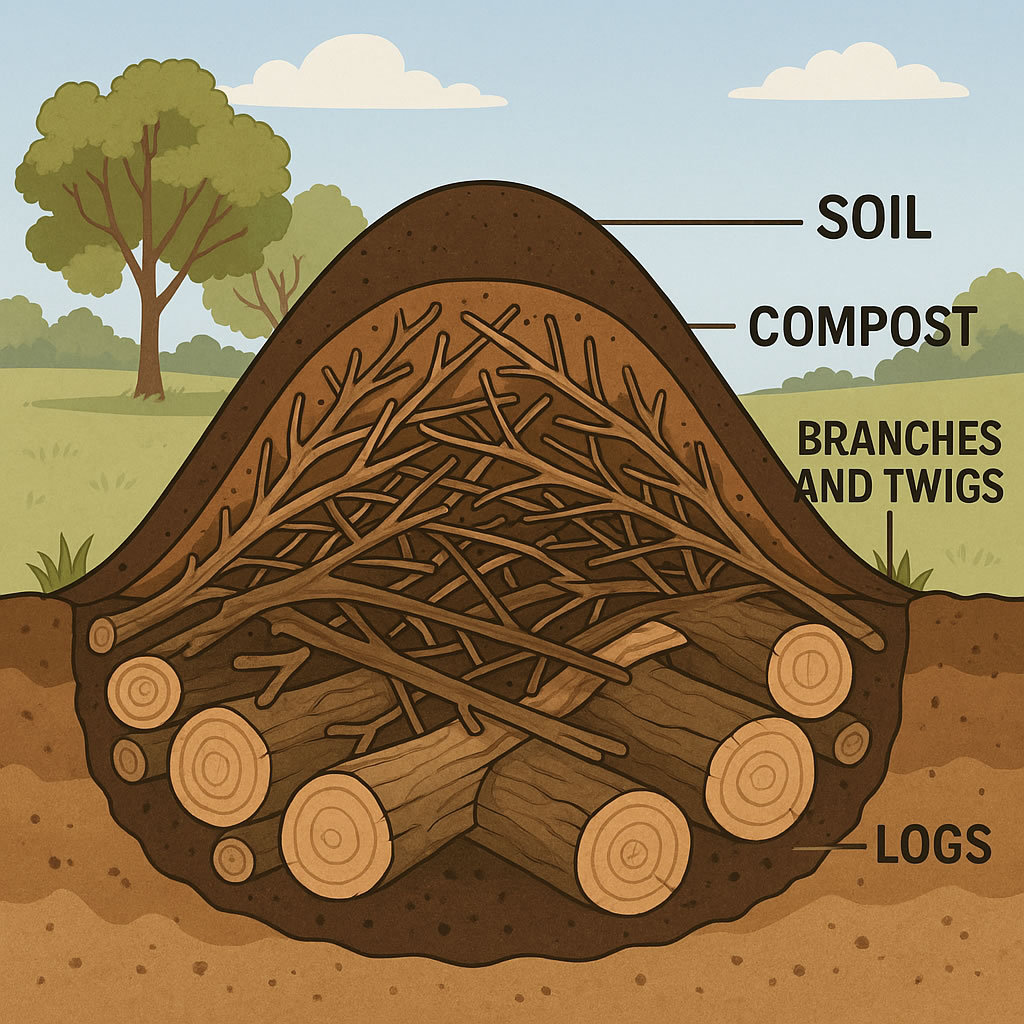Hugelkultur is a traditional gardening technique that involves creating raised garden beds by layering organic materials—especially decomposing wood—underneath a mound of soil. Originating in Eastern Europe and popularized by permaculture practitioners, hugelkultur (German for “mound culture”) mimics the natural forest floor, where fallen trees and branches slowly decompose and enrich the soil over time.
The core of a hugelkultur bed is made from logs, branches, and woody debris, often combined with compost, grass clippings, leaves, and other organic matter. As the wood breaks down, it acts like a sponge, soaking up water and slowly releasing it into the surrounding soil. This makes hugelkultur particularly valuable in dry or drought-prone areas, as it significantly reduces the need for irrigation once the bed is established. Over time, the decomposition process also generates warmth, extending the growing season slightly and creating a rich, aerated, nutrient-dense growing environment.
Using downed trees and limbs for hugelkultur is a smart, sustainable way to repurpose storm debris or natural forest litter. Instead of burning or hauling away fallen wood, which releases carbon and contributes to waste, hugelkultur puts it to work in a regenerative system. Ideally, hardwoods like oak or maple decompose slowly and support long-term water retention, while softer woods like pine or poplar break down more quickly, giving an early nutrient boost. Avoid using black walnut or cedar, as they can inhibit plant growth.
To build a hugelkultur bed with downed wood, start by digging a shallow trench (optional), then stack logs and larger branches at the bottom. Add progressively smaller twigs and limbs, fill in gaps with compost or topsoil, and finish with a thick layer of soil or mulch. As the bed settles and decomposes over several years, it continues to improve the soil structure and fertility. Hugelkultur is a low-cost, eco-friendly way to recycle woody debris while creating a high-performing garden bed.
